In 2024, we can expect significant advancements and changes in web design. Stay ahead of the curve and deliver cutting-edge online experiences with the top web design trends to watch for in 2024. These trends, based on industry research and expert predictions, will shape the future of web design and provide innovative solutions for businesses.
Key Takeaways:
- UX-Focused Design will prioritize immersive user experiences and personalized interactions.
- Y2K Effects will bring a nostalgic touch with retro illustrations and visual elements.
- Vibrant Gradients, popularized by Instagram, will enhance the visual appeal of websites.
- Kinetic Typography will add attention-grabbing animation to capture users’ interest.
- Interactive Storytelling will engage users through gamification, videos, and 3D visuals.
UX-Focused Design
In the ever-evolving world of web design, keeping the user at the forefront is paramount. That’s where UX-Focused Design comes in. This trend, expected to rise further in 2024, centers on creating immersive experiences that prioritize the user.
When it comes to UX-Focused Design, every interaction, every touchpoint, and every element on a website is meticulously crafted to engage visitors and provide a seamless user experience. The goal is to make users feel like they are an integral part of the website, facilitating a sense of connection and personalization.
One of the factors contributing to the success of UX-Focused Design is the utilization of AI-powered platforms. These platforms employ advanced algorithms to simplify navigation and offer personalized recommendations based on user preferences and behavior. By harnessing the power of artificial intelligence, websites can elevate the user experience to new heights.
Immersive experiences are at the core of UX-Focused Design. They aim to captivate users and evoke emotions, leaving a lasting impression. Whether it’s through innovative scrolling animations, responsive design, or thoughtfully designed microinteractions, UX-Focused Design takes web experiences to the next level.
The Power of Immersive Experiences
Immersive experiences created through UX-Focused Design have numerous benefits. These experiences can enhance user engagement, leaving users more likely to explore a website further, interact with its content, and ultimately convert.
Personalized experiences play a key role in immersion. By tailoring content to individual users based on their preferences and past interactions, websites can provide a unique journey for each visitor. This level of personalization establishes a connection between the user and the website, fostering loyalty and driving repeat visits.
UX-Focused Design allows us to delve into the minds of users and create websites that cater to their needs, desires, and preferences. It’s about designing with intent, delivering an experience that not only meets expectations but goes above and beyond.”
Immersive experiences also contribute to an enhanced brand image. By delighting users with seamless interactions, visually stunning designs, and personalized content, websites can establish themselves as industry leaders and create a lasting impact in the minds of users.
Ultimately, UX-Focused Design brings together the elements of user-centered design, personalized experiences, and AI-powered platforms to create web experiences that are truly captivating. By incorporating this trend into their design strategy, businesses can deliver unforgettable experiences that set them apart from the competition.
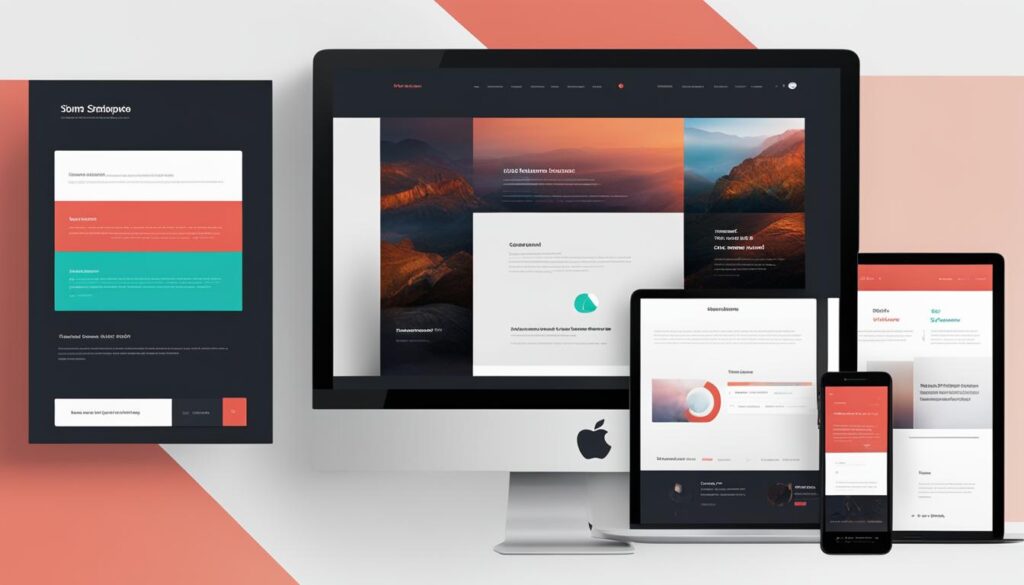
| Benefits of UX-Focused Design | User Experience | Immersive Experiences | User-Centered Design |
|---|---|---|---|
| Enhanced user engagement | Seamless interactions | Visually stunning designs | Personalized content |
| Improved brand image | Captivating experiences | Memorable impact | Informed design decisions |
| Increased user loyalty | Delightful journey | Unique brand identity | Deep understanding of user needs |
Y2K Effects
Remember the days of the late 90s and early 2000s? Nostalgia is back in full swing, and Y2K Effects are making a comeback in web design for 2024. This trend draws inspiration from the vibrant and playful elements of the Y2K era, adding a touch of nostalgia to modern websites.
Y2K Effects encompass various visual elements that defined that era, such as oversized text, retro illustrations, and vibrant color schemes. By incorporating these design choices, websites can evoke a sense of familiarity and take users on a journey back in time.
However, while embracing Y2K aesthetics, it is crucial to ensure mobile responsiveness. With an increasing number of users accessing websites on mobile devices, it is essential to prioritize the seamless experience across all devices. Incorporating responsive design principles ensures that the visual elements translate well on smaller screens without compromising the overall nostalgic feel.
Let’s take a look at the visual elements that make Y2K Effects a captivating trend in web design:
Retro Illustrations
Y2K Effects often incorporate retro illustrations reminiscent of the graphics and iconic imagery of the late 90s and early 2000s. These illustrations add a playful and nostalgic element to website designs, capturing the attention of visitors and fostering a sense of connection with the past.
Visual Elements
The use of visual elements, such as bold colors, gradients, and geometric shapes, is a hallmark of Y2K Effects. These elements bring vibrancy and energy to web design, creating eye-catching visuals that captivate users and make a lasting impression.
Gif Image:
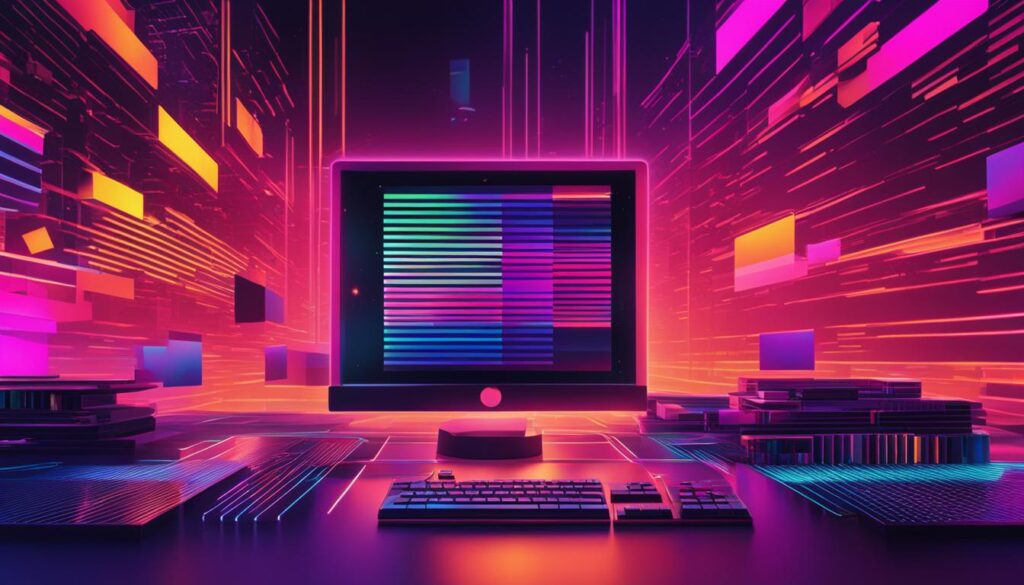
Embracing Y2K Effects in web design not only adds a nostalgic touch but also allows for creative experimentation with visual elements. By combining retro illustrations, vibrant colors, and other design choices, websites can create a unique and engaging user experience.
| Advantages | Considerations |
|---|---|
|
|
Vibrant Gradients
Gradients have become a popular design trend, thanks to platforms like Instagram. In 2024, vibrant gradients continue to make a strong impact in web design. These dynamic color transitions can be incorporated into various elements of a website, such as backgrounds, CTAs, and sections, to add visual interest and enhance the overall user experience.
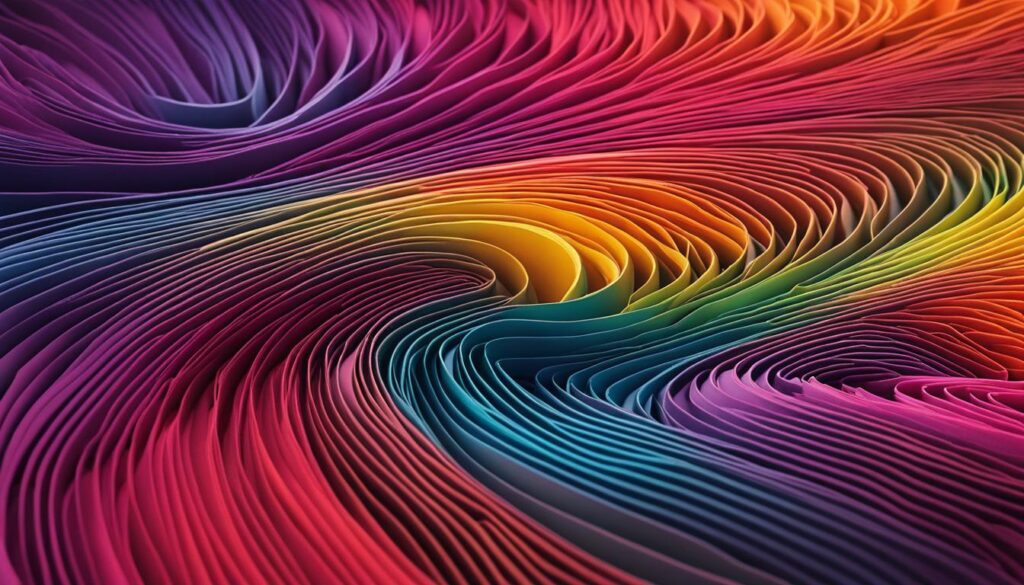
Vibrant gradients are particularly effective in capturing attention and increasing user engagement. By using gradients, you can create visually appealing websites that stand out from the competition.
Logo design is another area where vibrant gradients can make a significant impact. The use of gradients in logos adds depth and dimension, making them visually captivating and memorable.
For SaaS websites and e-commerce platforms, vibrant gradients can be used strategically to highlight essential messages and call-to-action buttons. By incorporating these gradients, you can create a sense of urgency and prompt users to take action.
When using vibrant gradients, it’s important to strike a balance between visual appeal and usability. Ensure that the text and other elements on your website are easily readable against the gradient background.
Incorporating Vibrant Gradients:
- Use gradients to add visual interest to backgrounds, CTAs, and sections.
- Experiment with vibrant color combinations to create eye-catching designs.
- Apply gradients to logo designs for a modern and captivating look.
- Strategically use gradients on SaaS websites and e-commerce platforms to highlight important messages and call-to-action buttons.
Benefits of Vibrant Gradients:
- Enhance the visual appeal of your website and make it stand out from competitors.
- Capture user attention and increase engagement.
- Add depth and dimension to logo designs, making them more memorable.
- Create a sense of urgency and prompt users to take action on SaaS websites and e-commerce platforms.
In conclusion, vibrant gradients are a powerful design element that can take your web design to the next level. By incorporating vibrant gradients into your website’s visuals and leveraging their visual appeal, you can create an engaging and visually captivating online experience for your users.
| Advantages | Disadvantages |
|---|---|
| Eye-catching and visually appealing | Potential readability issues if not carefully implemented |
| Can highlight important messages and calls-to-action | May not be suitable for all types of websites and brands |
| Adds depth and dimension to logo designs | Overuse of gradients can make the design appear busy |
Kinetic or Dynamic Typography
When it comes to captivating viewers and enhancing the browsing experience, web designers are turning to a captivating trend known as Kinetic Typography. By adding animation to text, websites can instantly grab the attention of visitors and keep them engaged without overwhelming the page with excessive visuals or shapes.
Kinetic typography can be creatively incorporated into various elements of a website, such as headlines, subheadings, or even as a standalone feature on the home page. As users scroll through the web page, the moving text creates a sense of dynamism and adds an interactive touch to the browsing experience.
Enhancing User Engagement
With attention spans becoming shorter in the digital age, it is crucial for businesses to find innovative ways to capture and hold the attention of their audience. Kinetic typography fulfills this need by providing a visually appealing and attention-grabbing element that breaks through the clutter of static text.
When implemented effectively, kinetic typography can elevate the overall aesthetic of a website and leave a lasting impression on visitors. By animating specific words or phrases, businesses can emphasize key messages, showcase their brand’s personality, and create a memorable browsing experience.
Relevance to Digital Marketing Services, Portfolios, Agencies, and SaaS Platforms
Kinetic typography is a versatile design trend that can be incorporated into websites across various industries. However, it particularly suits fields like digital marketing services, portfolios, agencies, and SaaS platforms.
For digital marketing services, the animated text can help highlight key information, such as unique selling points or the benefits of the services offered. This engages visitors and encourages them to explore further, leading to increased conversions.
Portfolios can benefit from kinetic typography by using it to showcase their work or key achievements. By animating text related to their projects, designers or artists can provide a delightful and interactive portfolio browsing experience.
Agencies can leverage kinetic typography to add a creative edge to their websites while effectively communicating their services. Dynamic text can be used to display the agency’s expertise, approach, and successfully convey the agency’s brand personality.
SaaS platforms can leverage kinetic typography to demonstrate their software’s features or showcase customer testimonials. The animated text creates a visually engaging way to communicate complex concepts, increasing user comprehension and establishing credibility.
Example of Kinetic Typography Implementation for Digital Marketing Services:
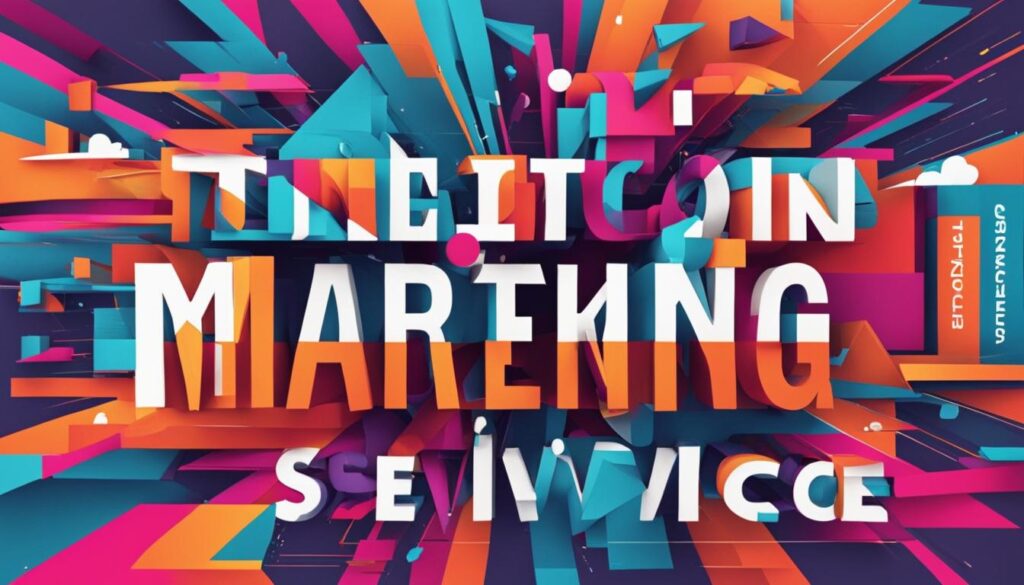
| Benefits | Examples |
|---|---|
| Enhances user engagement | Animated words or phrases that grab attention |
| Increases conversion rates | Dynamic typography highlights unique selling points |
| Communicates brand personality | Animated typography reflects the brand’s style and tone |
Interactive Storytelling
Interactive Storytelling is a popular trend in web design that is expected to continue growing in 2024. By adding interactivity to storytelling, websites can create a unique brand identity and engage users in a highly competitive landscape. This trend can be achieved through gamification, videos, and immersive 3D visuals. Interactive storytelling can be as simple as adding animations or dynamic text to create a memorable experience for users. It is particularly effective for e-commerce websites, offering inspiration for engaging and immersive web design.
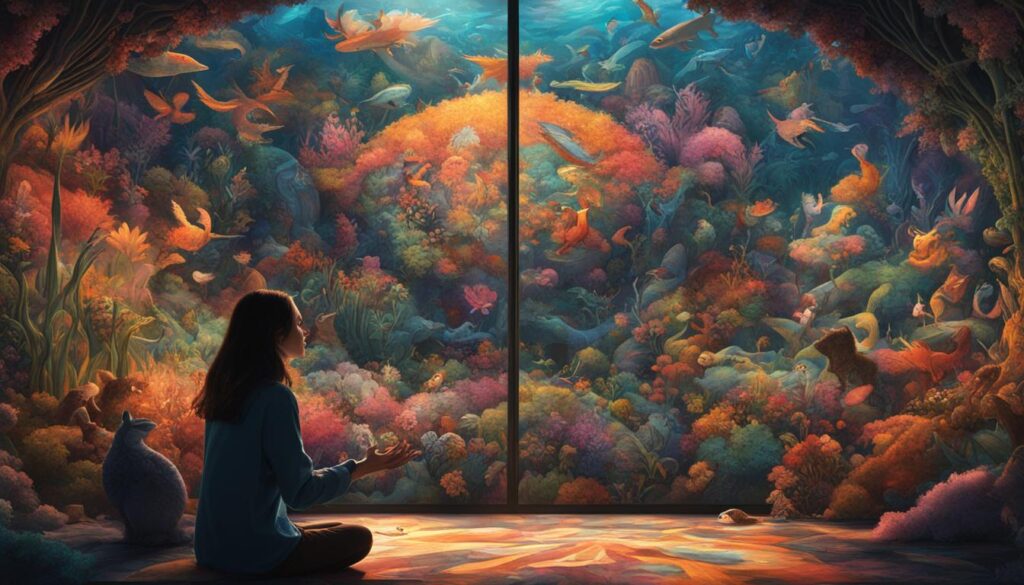
Advantages of Interactive Storytelling:
- Enhances user engagement by involving users in the narrative.
- Elevates brand identity by creating a unique and memorable online experience.
- Increases user interaction and time spent on the website.
- Drives conversions and sales by immersing users in the story and showcasing products or services.
Interactive storytelling can captivate users through various techniques, such as:
- Gamification: Incorporating game elements, such as quizzes, challenges, or interactive rewards, to make the storytelling experience enjoyable and interactive.
- Videos: Integrating videos within the story to provide a visual and immersive experience that enhances the narrative and engages users on a deeper level.
- 3D visuals: Using interactive 3D visuals to create a realistic and interactive environment that allows users to explore and engage with the story in a visually stunning way.
“Interactive storytelling enables brands to connect with their audience on a more personal and engaging level, leading to increased user satisfaction and brand loyalty.”
When implemented effectively, interactive storytelling can convey brand messages, communicate product benefits, and evoke emotions, making it a powerful tool for businesses to differentiate themselves in the online space and stand out from competitors.
| Benefits of Interactive Storytelling | Examples |
|---|---|
| Increased user engagement | Virtual reality experiences that allow users to explore captivating narratives and make choices that shape the story. |
| Enhanced brand identity | Interactive campaigns that enable users to interact with the brand’s story, creating emotional connections and strengthening brand loyalty. |
| Improved information retention | Interactive infographics or multimedia presentations that present complex information in a visually engaging and interactive way, making it easier for users to understand and remember. |
| Increased conversions | E-commerce websites that integrate interactive storytelling to guide users through the purchase journey, showcasing products in an immersive and interactive manner. |
Large or Oversized Text
Large or Oversized Text is a web design trend that focuses on conveying information in a minimalistic and impactful way. By using large and bold headings, websites can immediately draw attention to key messages, services, or contact information.
This trend enhances the responsiveness of websites and allows designers to create a clean and minimal layout. Large or Oversized Text works particularly well for service-based businesses, agencies, and SaaS websites, as it emphasizes unique selling points and helps fill gaps for the audience.
Glassmorphism for the Hero Section
Glassmorphism, one of the emerging trends in website design, is set to dominate in 2024. This trend involves incorporating transparency to create a stunning glass-like effect, providing a visually pleasing experience for visitors.
One area where glassmorphism shines is in the hero section of websites. This prominent section at the top of a webpage serves as a gateway to the site, making it the perfect place to make a strong first impression. By applying glassmorphism to the hero section, businesses can make their key messages or products stand out.
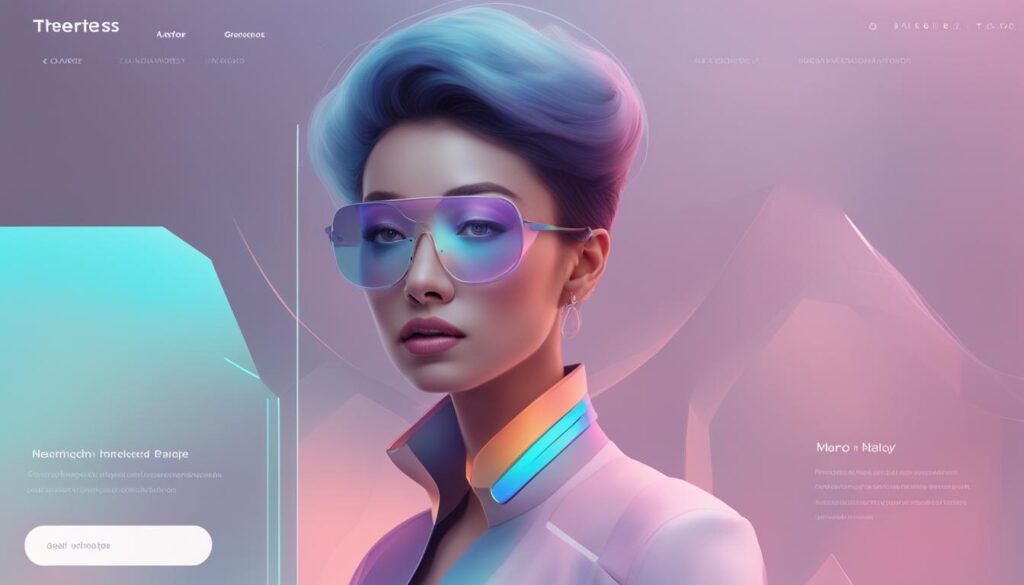
Creating a glass-like appearance in the hero section adds an element of modernity and aesthetics to the overall design. The transparency of glassmorphism allows for a subtle blend with the background, bringing attention to the central message or call to action.
Whether it’s a bold statement, a captivating image, or an enticing offer, the hero section can be the focal point that captures users’ attention. With glassmorphism, the hero section becomes a visually appealing space that immediately engages visitors and encourages them to explore further.
This trend is not limited to a particular industry; rather, it can be integrated into websites across various sectors. From e-commerce platforms to professional portfolios, glassmorphism aligns with the principles of minimalism and enhances the overall aesthetics of website design.
When implementing glassmorphism in the hero section, it’s essential to strike the right balance. The transparency should complement the content without overwhelming it. Designers can experiment with different levels of transparency, blending it seamlessly with the overall layout.
By embracing glassmorphism in the hero section, businesses can create captivating website experiences that leave a lasting impression on visitors and drive engagement.
Conclusion
In conclusion, the web design trends for 2024 present exciting opportunities to create cutting-edge online experiences. By incorporating trends such as UX-focused design, Y2K effects, vibrant gradients, kinetic typography, interactive storytelling, large or oversized text, glassmorphism, and more, businesses can stay ahead of the curve and provide immersive user experiences. These trends reflect the evolving nature of web design and the increasing importance of user-centric design.
Embracing these trends enables businesses to create compelling websites that resonate with users and drive engagement. Whether it’s designing websites with a focus on seamless user experiences, leveraging Y2K aesthetics for a touch of nostalgia, or incorporating vibrant gradients to enhance visual appeal, staying current with the latest trends is crucial in capturing and retaining user interest.
To create immersive web experiences and stay ahead of the competition, it is essential for businesses to explore and adopt these web design trends for 2024. By partnering with our expert team at WebsiteDesigner.Business, you can unlock the full potential of these trends and deliver outstanding online experiences that captivate your target audience. Don’t miss out on the opportunity to harness the power of these cutting-edge web design trends and take your online presence to the next level.
FAQ
What is UX-Focused Design?
UX-Focused Design is a web design trend that focuses on creating immersive experiences for users by designing websites with the user in mind. It involves designing every interaction or touchpoint on the website to engage visitors and provide a seamless user experience. AI-powered platforms are often used to simplify navigation and offer personalized recommendations, enhancing the overall user experience.
What are Y2K Effects in web design?
Y2K Effects in web design refer to a trend that takes inspiration from the late 90s and early 2000s. It involves using oversized text, retro illustrations, and visuals reminiscent of the Y2K era. These elements can add a nostalgic and playful touch to website designs. However, it is important to ensure mobile responsiveness and focus on elements that engage users on every device.
How are vibrant gradients used in web design?
Vibrant gradients, popularized by Instagram, continue to be a prominent trend in web design. They can be used to enhance the visual appeal of websites, imagery, and logos. Gradients can be incorporated in elements such as backgrounds, CTAs, and sections to add visual interest and increase user engagement. They are particularly effective for SaaS websites and e-commerce platforms, where they can highlight essential messages and prompt users to take action.
What is kinetic typography in web design?
Kinetic typography is an emerging trend in web design that involves adding animation to text to capture viewers’ attention. It allows designers and brands to keep users engaged without cluttering the website with visuals or shapes. Kinetic typography can be used for headlines, subheadings, or as a standalone element on the home page. It looks appealing on mobile devices and can be incorporated into websites for various industries such as digital marketing services, portfolios, agencies, and SaaS platforms.
What is interactive storytelling in web design?
Interactive storytelling is a popular trend in web design that is expected to continue growing in 2024. By adding interactivity to storytelling, websites can create a unique brand identity and engage users in a highly competitive landscape. This trend can be achieved through gamification, videos, and immersive 3D visuals. Interactive storytelling can be as simple as adding animations or dynamic text to create a memorable experience for users. It is particularly effective for e-commerce websites, offering inspiration for engaging and immersive web design.
How does large or oversized text impact web design?
Large or oversized text is a web design trend that focuses on conveying information in a minimalistic and impactful way. By using large and bold headings, websites can immediately draw attention to key messages, services, or contact information. This trend enhances the responsiveness of websites and allows designers to create a clean and minimal layout. Large or oversized text works particularly well for service-based businesses, agencies, and SaaS websites, as it emphasizes unique selling points and helps fill gaps for the target audience.
What is glassmorphism in web design?
Glassmorphism is an up-and-coming trend in web design that involves applying transparency to create a glass-like appearance or effect. This trend is expected to dominate in 2024, particularly in the hero sections of websites. Glassmorphism can make messages or products stand out and create a visually pleasing experience for visitors. It can be integrated into websites in every industry and aligns with the principles of minimalism.
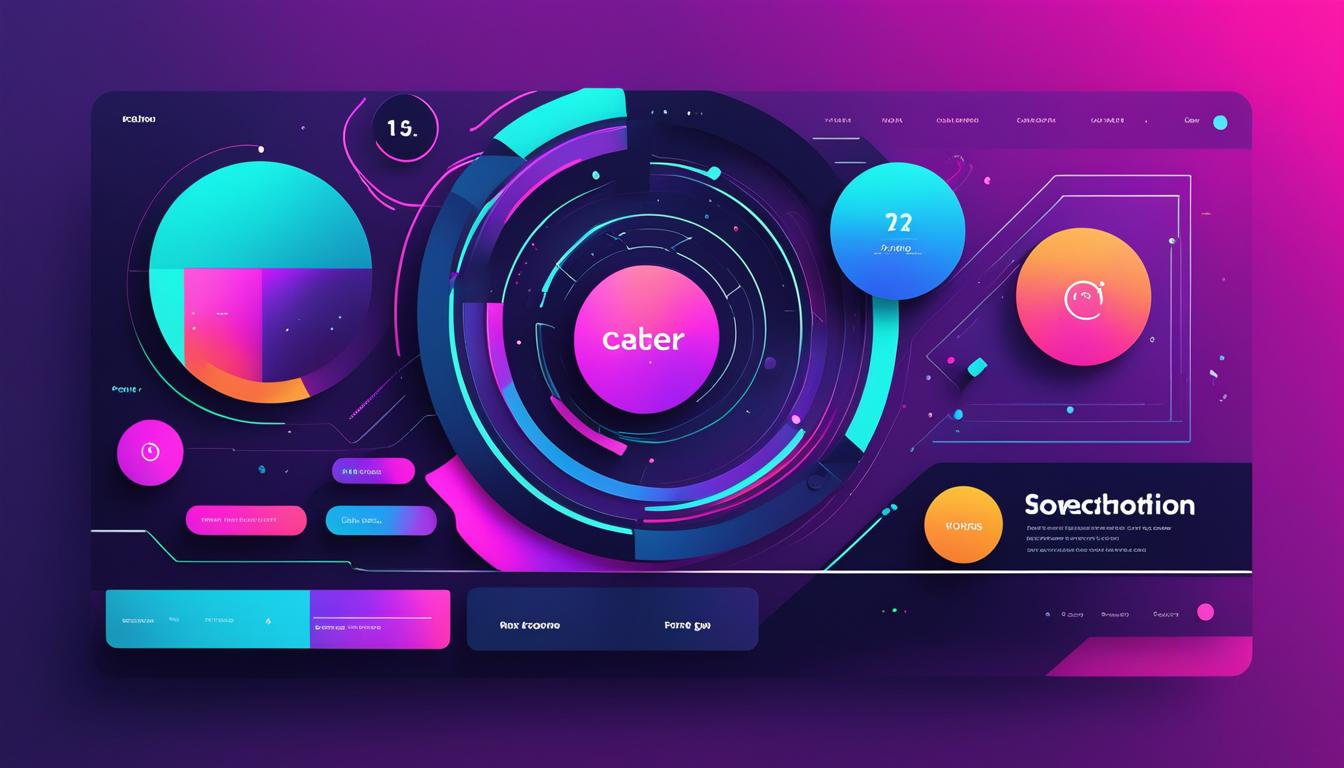
Leave a Reply